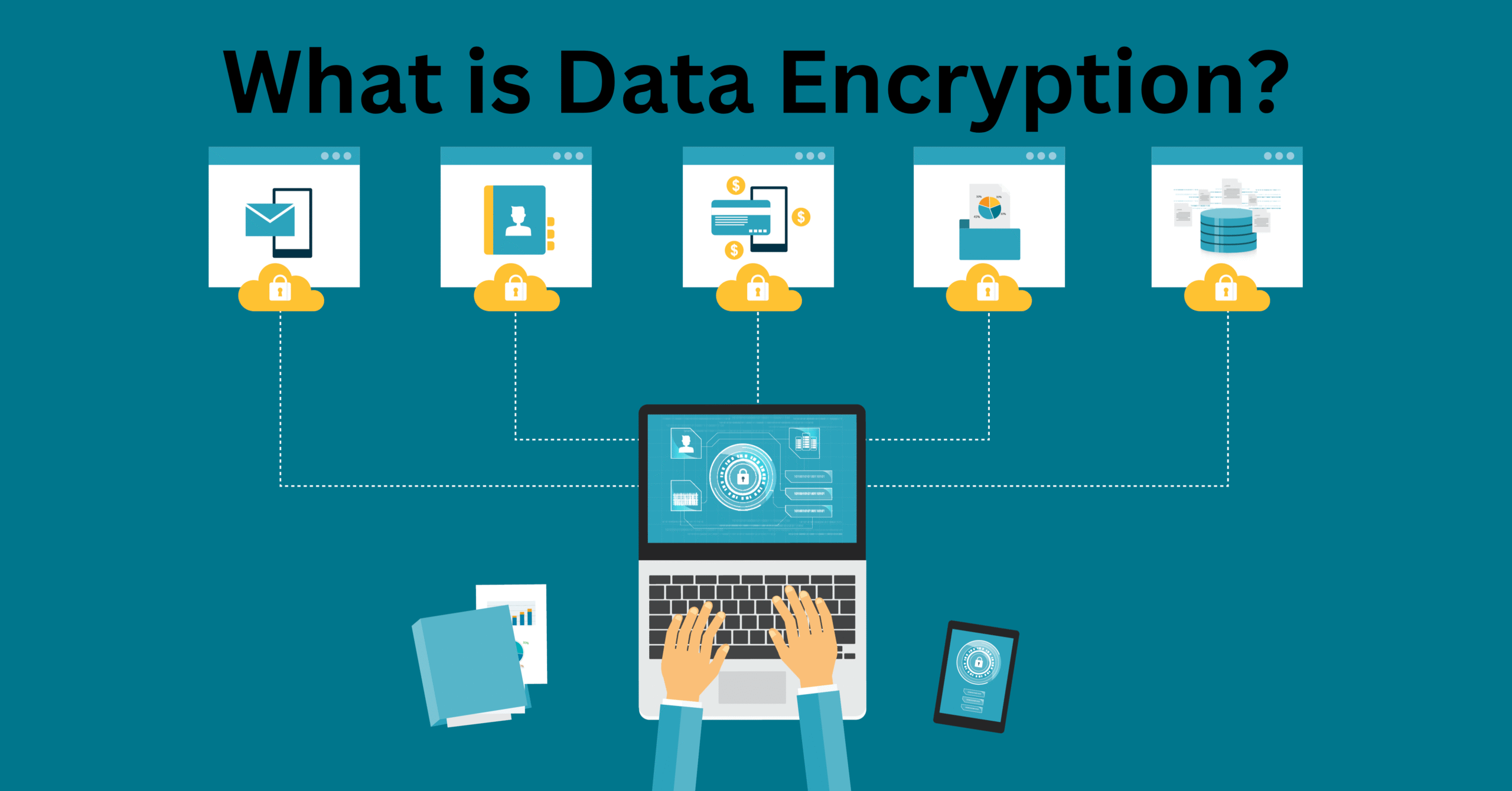
Discover how data encryption works and why it’s vital. Learn the basics, real-world applications, and best practices for protecting sensitive information.
Why Encryption Is More Relevant Than Ever
Imagine this: you’re sending a confidential contract to a client via email. You hit “send,” confident it’s safe. But what if someone intercepted it? Cyber threats like this happen every day, and that’s where data encryption comes into play.
Encryption turns readable data into scrambled code, so even if hackers access it, they can’t understand it. In this article, we’ll explain how data encryption works in simple terms, why it’s critical for IT professionals, and how it safeguards both personal and business information.
How Data Encryption Works: The Basics
At its core, encryption is a way of converting plain text into an unreadable format called ciphertext. Only authorized parties with the correct key can decrypt it back into readable text. There are two main types:
Symmetric Encryption
- Uses a single key for both encryption and decryption.
- Fast and efficient, ideal for large amounts of data.
- Example: AES (Advanced Encryption Standard) is widely used in cloud storage and secure communications.
Asymmetric Encryption
- Uses a public key to encrypt data and a private key to decrypt it.
- Slower but more secure for exchanging sensitive information.
- Example: RSA encryption is common in online banking and digital signatures.
Think of symmetric encryption as a locked diary with one key, while asymmetric encryption is like a mailbox: anyone can drop letters in, but only the owner can open it.
Why Encryption Is So Important
Encryption isn’t just a technical detail—it’s the backbone of trust in the digital world. Here’s why it matters:
- Protects Sensitive Data: Keeps personal, financial, and business information safe from unauthorized access.
- Maintains Privacy: Ensures that communication over email, apps, and websites remains confidential.
- Supports Compliance: Helps businesses meet regulations like GDPR, HIPAA, and PCI DSS.
- Prevents Data Breaches: Even if cybercriminals intercept data, encrypted information is unreadable.
📌 Example: Online shopping sites use SSL/TLS encryption to protect credit card details. Without encryption, every online transaction would be at risk.
Real-World Applications of Data Encryption
Understanding encryption in theory is one thing, but seeing it in action makes its importance clearer.
1. Secure Websites
When you see the padlock in your browser, your connection to that site is encrypted. This protects login credentials, personal details, and payment information.
2. Email and Messaging
Services like Gmail, WhatsApp, and Signal use encryption to ensure messages can only be read by the intended recipients.
3. Cloud Storage
Files stored in services like Google Drive or Dropbox are encrypted at rest and in transit, so your documents remain private even on shared servers.
4. Digital Signatures
Encryption verifies the authenticity of documents and software, ensuring they haven’t been tampered with.
Best Practices for Using Encryption
Even the strongest encryption can fail if implemented poorly. Here are some practical tips:
- Use Strong, Trusted Algorithms: Stick to AES, RSA, or SHA standards.
- Manage Your Keys Securely: Store keys in secure modules or key vaults; never hardcode them.
- Encrypt Both Data at Rest and in Transit: Protect databases, files, and communications.
- Regularly Update and Rotate Keys: Helps defend against evolving threats.
- Educate Your Team: Awareness reduces risks from human error.
Whether you’re aiming for an IT career or just want to be safer online, knowing the basics of data encryption methods is a game-changer. It helps you:
Choose secure tools and apps with confidence.
Conclusion: Encryption as a Cornerstone of Security
Understanding how data encryption works isn’t just for cybersecurity experts—it’s essential knowledge for anyone handling digital information. From protecting emails to securing cloud files and financial transactions, encryption ensures that data remains private, secure, and trustworthy.
Start by learning the basics, implement strong encryption practices, and stay vigilant. In a world where data is the new currency, encryption isn’t optional—it’s a necessity.
Encryption doesn’t have to feel overwhelming. Once you see it as different “locks” for your digital life—symmetric, asymmetric, hashing, and hybrid—it becomes easier to understand and apply.
Hashing is another method often mentioned encryption along, but it’s slightly different. Instead of locking and unlocking, hashing turns data into a fixed-length string of characters. Once hashed, it can’t be turned back into the original data .
Start small: enable full-disk encryption on your laptop, notice the HTTPS padlock in your browser, or try a password manager that uses encryption behind the scenes.
The more you practice spotting and using these tools, the more natural encryption will feel. Over time, you’ll not only understand the methods—you’ll confidently use them to protect your data and maybe even help others do the same.








